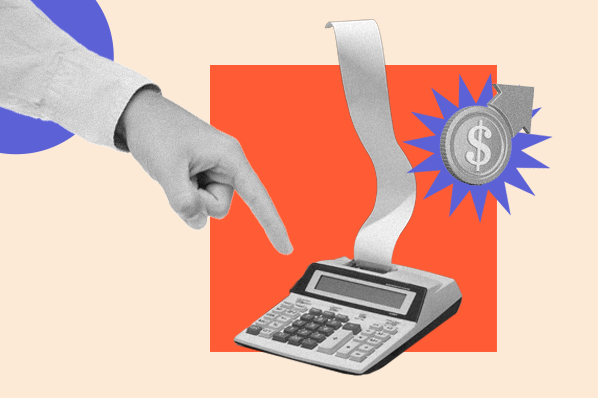In any market, buyers and sellers need to agree on the value of the items being sold, which determines the final price of goods and services.
Agreeing on the price of a pair of shoes or a new phone may not be so difficult. But estimating the value of a business — that’s more challenging. Still, it’s a necessary step for any companies that rely on investors, whether they’re publicly traded or going through startup fundraising.
You may hear the terms “market cap” and “valuation” used in an investment setting. While they have some similar qualities, they’re not the same process. And it’s essential that founders know the difference.
What is market cap vs. valuation?
Market cap estimates the value of a public company by multiplying its current share price by the total number of outstanding shares. The term “valuation” refers to any attempt to estimate the value of a company, which includes the market cap and other methods.
Both market cap and valuation estimates are values assigned to a company at a given time. As such, they can both change based on new information.
Market capitalization definition
Market capitalization (or market cap) is the total value of a publicly traded company’s outstanding stock. It’s one way to estimate the value of a company, and it’s a useful tool for comparing public companies across industries.
Market cap example
The market cap is calculated by multiplying the company’s total outstanding shares by the current share price.
Let’s use Walmart as an example.
As of October 2022, Walmart has 2.711B shares outstanding and an average stock price of $138 per share for the year. When you multiply $138 by 2.711B, you get a market cap of $374.118B.
Since a company’s stock price changes each day, a company’s exact market cap is fluid.
The market cap can also change if the number of outstanding shares changes, such as when a company buys back stock (decrease in the number of shares) or issues new shares (increase in the number of shares).
Knowing how to calculate a company’s market capitalization may be helpful. But you typically don’t have to do the work on your own. You can easily find the market cap on websites that provide financial information about publicly traded companies, such as Yahoo Finance.
Interpreting market cap
Market cap tells you how the stock market values a company. Investors use it as a tool to compare company size and maturity to inform their investment strategy.
For this reason, they divide companies and their stock into categories based on market cap:
- Micro-cap: $50m to $300m (examples: Argo Blockchain, PHX Minerals Inc.)
- Small-cap: $300m to $2B (example: Theravance Biopharma)
- Mid-cap: $2B to 10B (example: Dillard’s)
- Large-cap: $10B to $200B (examples: Netflix, PayPal, Target)
- Mega-cap: $200B or higher (examples: Apple, Alphabet Inc., Walmart, Amazon)
Large-cap companies have typically been around longer, and they tend to present less investment risk. In contrast, micro-cap and small-cap companies might be younger companies or in emerging markets. They present more risk but can offer higher growth potential.
Note that you can only use market cap to estimate the value of publicly traded companies — this metric doesn’t apply to privately held companies or startups. Alternatively, there are websites like Stocktrades.ca that you can use to determine market cap and stock prices.
Valuation definition
Valuation refers to the process of estimating the current (or projected) value of an asset, such as a company. It’s usually done to help make an investment decision.
An investor may want to estimate the value of a company to decide whether they think the current stock price is fair, high, or low.
There are several ways to determine valuation.
For example, you can estimate the valuation of a business using a multiple of revenue or a multiple of earnings. The discounted cash flow method, which values assets based on projected future cash flow, is another popular valuation method.
There also are methods to estimate the value of a company that hasn’t earned revenue yet, which may be the case for pre-seed startups. In the world of startups, valuations are often used when a company wants to start raising money by selling equity.
The company and the investor agree on a valuation that determines how much ownership the investor receives in exchange for the cash they provide.
Let’s say you launch a Series A with a valuation of $15m and plan to sell 20% of your company. You’d raise $3m in equity financing.
Valuation methods for revenue-generating companies
Investors and analysts can use the company’s financial data to inform the valuation estimate for startups and older companies that are generating predictable revenue streams.
In particular, they can look at the following types of data:
- Revenue: Total sales volume, percent increase in sales, profitability metrics
- Customer: Customer acquisition costs, lifetime value of the customer, customer acquisition rate, customer churn rate
- Cash management: Cash flow, burn rate
You can use several preestablished methods to value a revenue-earning company, such as:
- Times revenue method: Revenue times a multiplier determined by industry factors and the economic environment
- Discounted cash flow (DCF) method: Uses adjusted projections of future cash flow
- Risk factor summation: Starts with a baseline valuation and makes adjustments based on 12 types of risk associated with investments
- Book value: Subtracts a company’s total liabilities from its total assets
- Enterprise value: Market cap plus the value of the company’s debt minus cash
- Cost to duplicate: Uses the total value of the business’s startup costs
You can use alternative valuation methods if you don’t have enough revenue data.
Valuation methods for pre-revenue companies
Estimating the value of a pre-revenue company can be trickier — you have a plethora of factors to consider and very little performance data.
Ultimately, you want to find a valuation that’s appropriate for both the company and the investor. To do this, it’s often a process of balancing a company’s assets (strengths) against its liabilities (weaknesses).
Look at the following areas and see where the strengths and weaknesses lie when doing a startup valuation of a pre-revenue company:
- Quality and number of marketing channels and partnerships
- Size of the opportunity (total addressable market, or TAM)
- Quality and characteristics of the product or technology
- Capital structure and the need for outside investment
- Level of competition in the market
- Quality of the management team
- Industry risk
Two popular methods for arriving at a pre-revenue valuation include the scorecard method and the Berkus method.
The scorecard method compares a pre-revenue company to similar startups in several categories, such as the product and size of the opportunity. In contrast, the Berkus method looks at the business idea, prototype (if any), and other factors to do a valuation.
Difference between market cap and valuation
There are some key differences between market cap and valuation:
- You can only use the market cap method on companies that have gone public and sold shares.
- You can calculate the valuation of any company — before it goes public or even brings in revenue — but not the market cap.
- There is one way to calculate the market cap but several ways to do a company valuation.
- At any given point, a company only has one market cap value. In contrast, analysts can come up with several valuation estimates for one company by using different methods.
Tips for getting the best valuation for your startup
A valuation is likely on your horizon if you’re a startup founder considering equity funding. Here are some best practices to help you get the best estimate for your business.
Consider the timing
You want to have your company valued at a time when you can put your best foot forward. This improves your chances of getting a higher valuation.
According to Montoya Sigafoose, CEO and founder of sales action platform Leadcamp, a startup could see a higher valuation right before it starts earning revenue. At this point, you have your product ready to go and a well-defined audience, making you an attractive investment.
The higher valuation will help unlock significant growth by enabling you to raise more money.
Then, you can opt to have a new valuation after you’ve launched your product, your revenue numbers start trending upward, and you have evidence to support product-market fit.
Look to your team to verify past performance
Tomasz Niezgoda, co-founder of SEO platform Surfer, recommends that pre-revenue founders who want a better valuation “build a strong and experienced team that investors can believe in.”
In other words, if your business doesn’t have a track record of revenue to use, one of the next-best things is a team of people with successful track records.
Get your finances in order
If you know you’ll need a valuation soon, focus on telling the right story with your cash flow and finances. Look for opportunities to reduce and control costs, and make sure your balance sheets and financial documents are organized.
What did you think of this article?
Business Acumen








![Business Ethics — Why They Matter and How Your Company Can Get it Right [+Expert Tips]](https://53.fs1.hubspotusercontent-na1.net/hubfs/53/business-ethics-1-20250224-5750570.webp)






